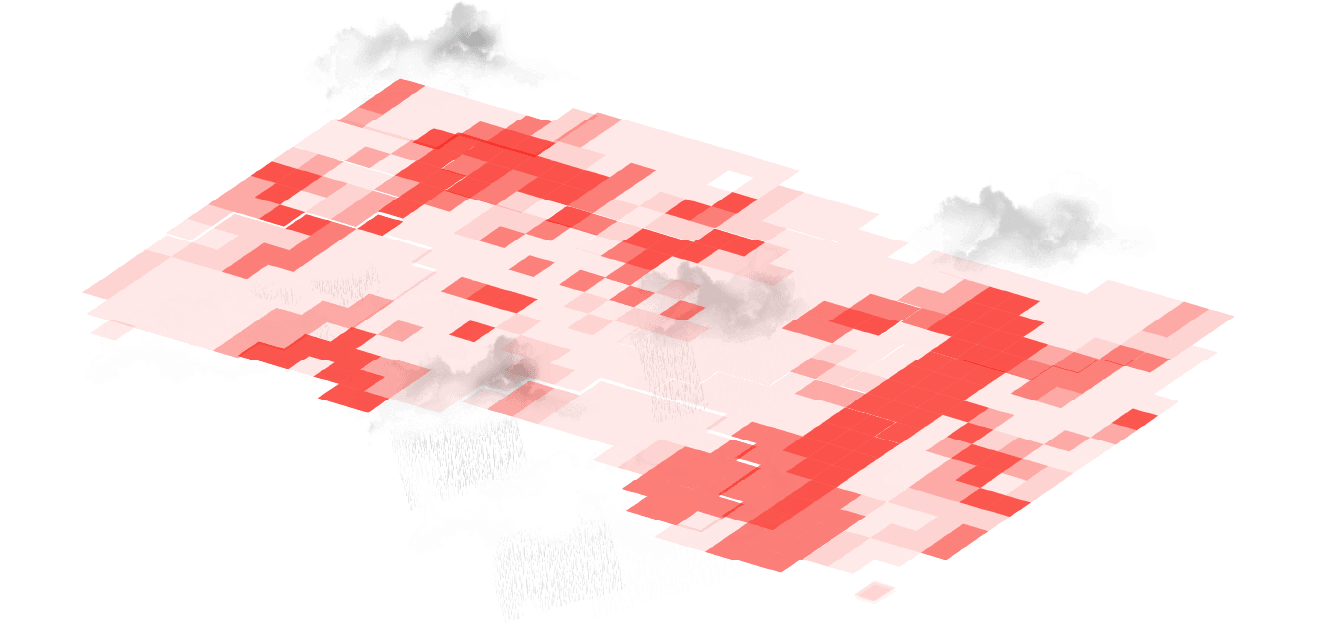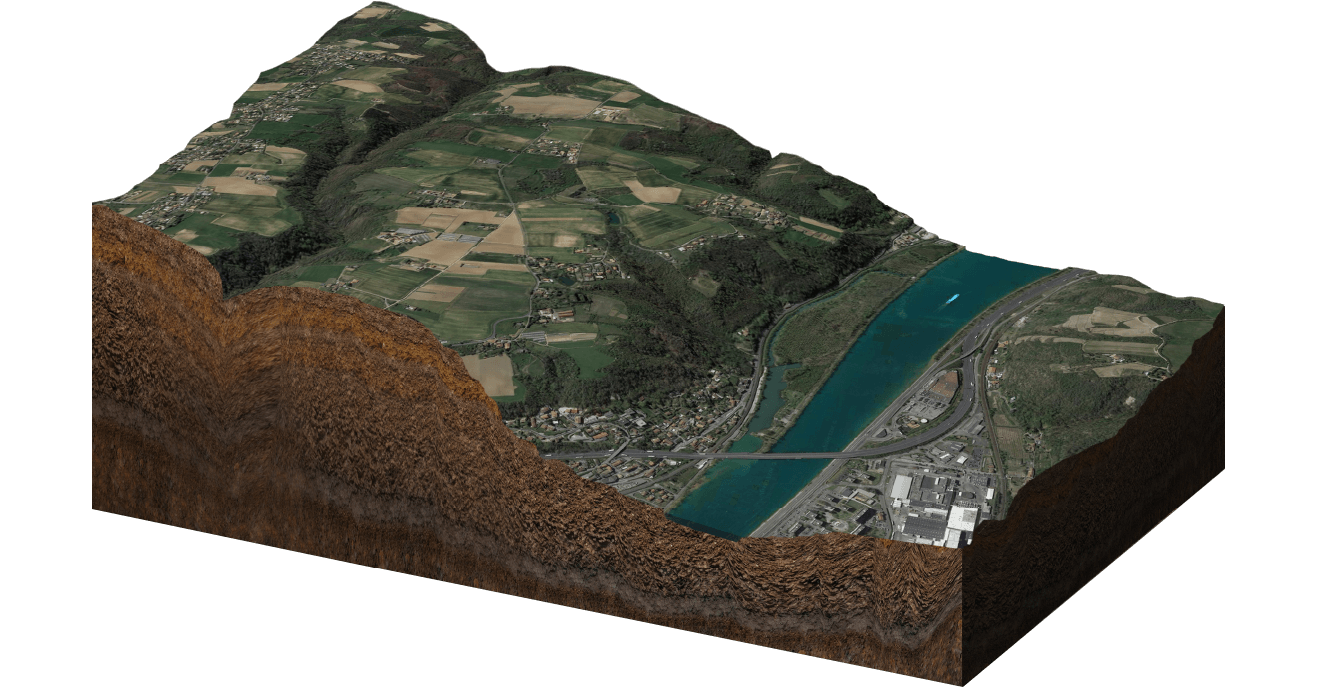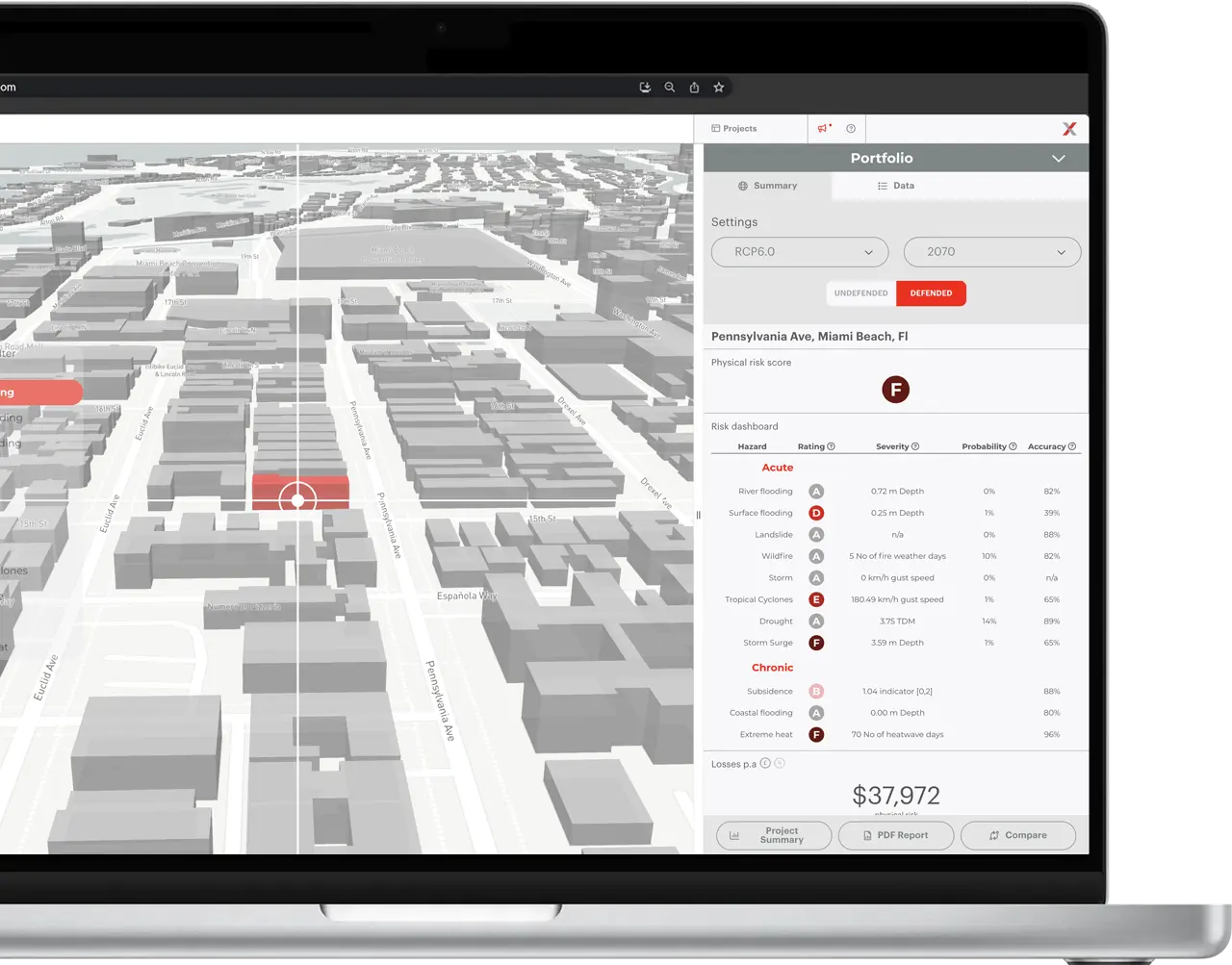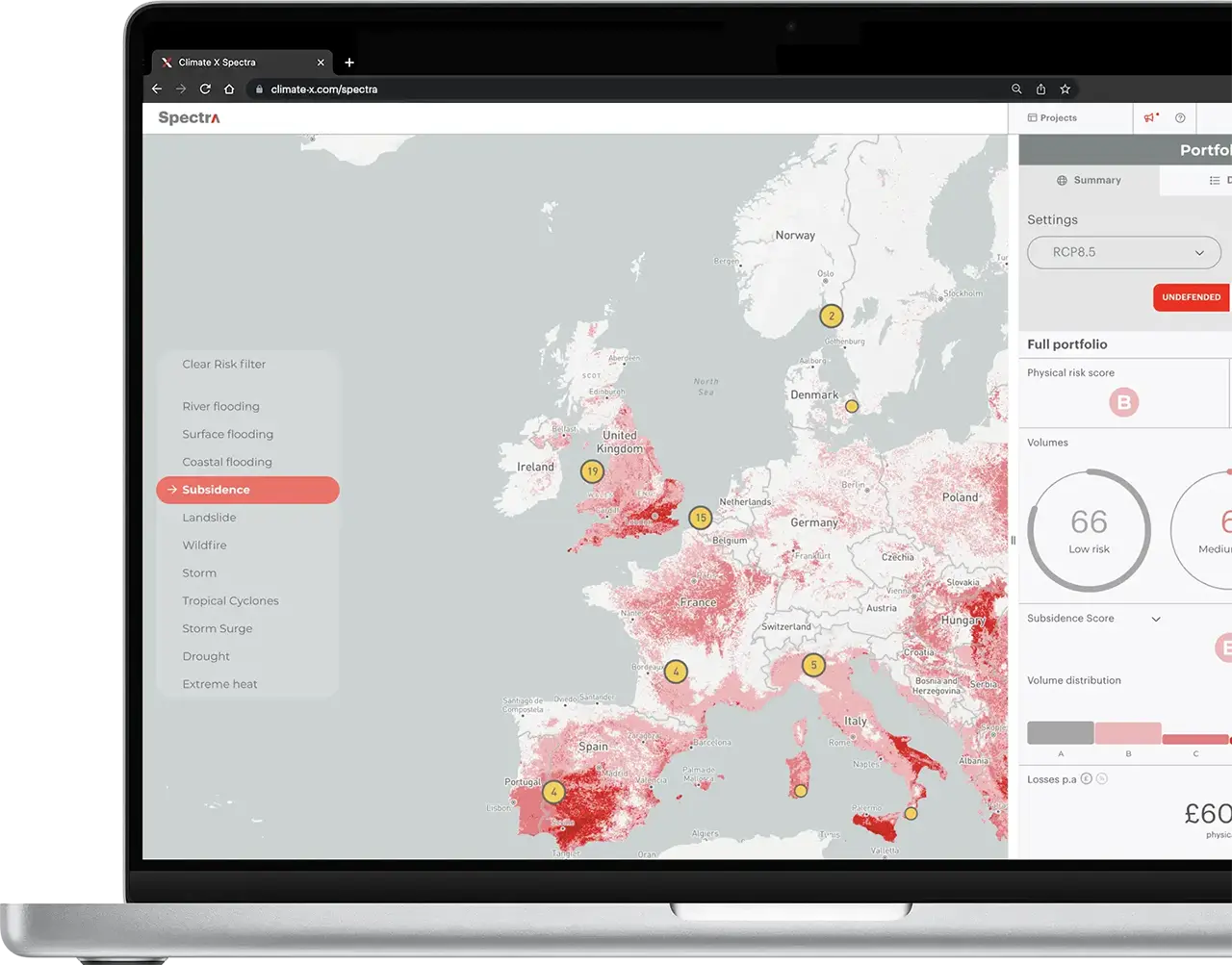
Award-winning Climate Risk Analytics
Location-specific physical & transition risk ratings as well as climate-adjusted VaR (cVaR) forecasts between now and 2100 under RCP/SSP pathways to map existing and future risks.
Accelerate strategic decisions
Global Physical Risk, Timeframes & Scenarios
A solution that goes beyond climate risk
Comprehensive risk ratings across 15+ physical risk hazards, with international coverage and projections to 2100 of up to 5-year intervals under PRA / NGFS / ECB aligned scenarios, including Flood (River/Surface/Coastal), Subsidence, Landslides, Heat Stress and more.
Transition Risks, Opportunities & EPC data
Energy Consumption & Retrofit Costs
Your potential financial losses are quantified as the cost of running an asset below the energy consumption standards. Assess your portfolio's transition risk and access full EPC data coverage across commercial and residential buildings.
Climate Adaptation, Risk Reporting & Compliance
So you can focus on executing
Spectra's comprehensive reporting includes assessments of your portfolio's physical and transition risks exposure, financial losses per annum, for TCFD/EU Taxonomy-compliant metrics and other mandatory disclosures. Download it for any asset, at any time - in seconds.



Capture all potential outcomes
Under different time horizons
We combine the latest climate models with up-to-date real-world data in our award-winning geospatial core, down to 10x10m in urban areas, so you can build climate-resilient portfolios and safeguard your operations across continents.
Digital Twin Simulations
Climate stress testing and scenario analysis
Switch on the laws of physics and simulate extreme weather events under several climate scenarios to make better-informed deals and investments.
Built in-house with a consistent methodology across 15+ hazards by our team of climate scientists.

Loss Modelling
Turn future risks into opportunities
Quantify the financial and valuation impact of climate risks (cVAR) as well as opportunities specific to properties, buildings and infrastructure by applying dose-response functions.













